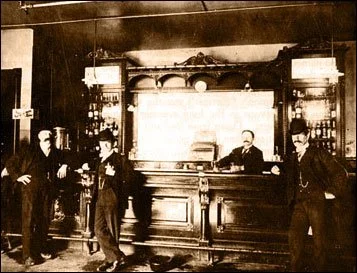— History —
↓
history
—
The Flying Steamshovel is named after a contraption that an enterprising dreamer named Lou Gagnon built, flew, and crashed right next to this site. Lou Gagnon’s dream was to ferry the gold ore off the steep slopes of Red Mountain by air, and on a February afternoon in 1902, his mysterious machine was skidded into the nearby yard for its maiden flight.
The helicopter plane, built of iron, wood and brass, appeared with its wings fabricated of canvas and piano wire. It was fitted with two steam engines – one to power the large overhead rotors, and one to drive the rear propulsion propeller. It bristled with gauges, valves and levers. Smoke curled from the twin stacks.
Gagnon’s moment was drawing near. With his eye on the steam gauge, Gagnon reached up and slowly valved the steam into the turbines, causing the main rotor to turn. He then cracked the throttle of the horizontal engine to make the push propeller tick over. Soon both were a blur and an invigorating downdraft blasted everything loose from the scene, including the crowd. The rickety framework began to shudder and finally the front end of the thing lurched free of the ground. At the same time the back end began to revolve from the torque.
Through a series of frantic adjustments, Gagnon did manage to get the Flying Steamshovel in the air above the height of the Hotel. But in a final effort to control the spinning machine he turned off the upper valve of the turbine’s casing which disastrously caused the main rotors to come to a groaning and sudden halt. The tail dropped first and the Flying Steamshovel corkscrewed down, barely missing the hotel, and crashed upside down in an explosion of steam, smoke and cinders.
Lou Gagnon was pulled unconscious from the burning wreckage by two local firemen. He suffered a badly broken leg and burns to upper body and face, but eventually recovered to take up a life as a haberdasher in Spokane.
And so, the question remains – Is the story of “The Flying Steam Shovel” to be believed? Well, my friends, we offer proof from the archives of history, complete with affidavits from those present that fateful day, see “The Story of the Flying Steamshovel”

